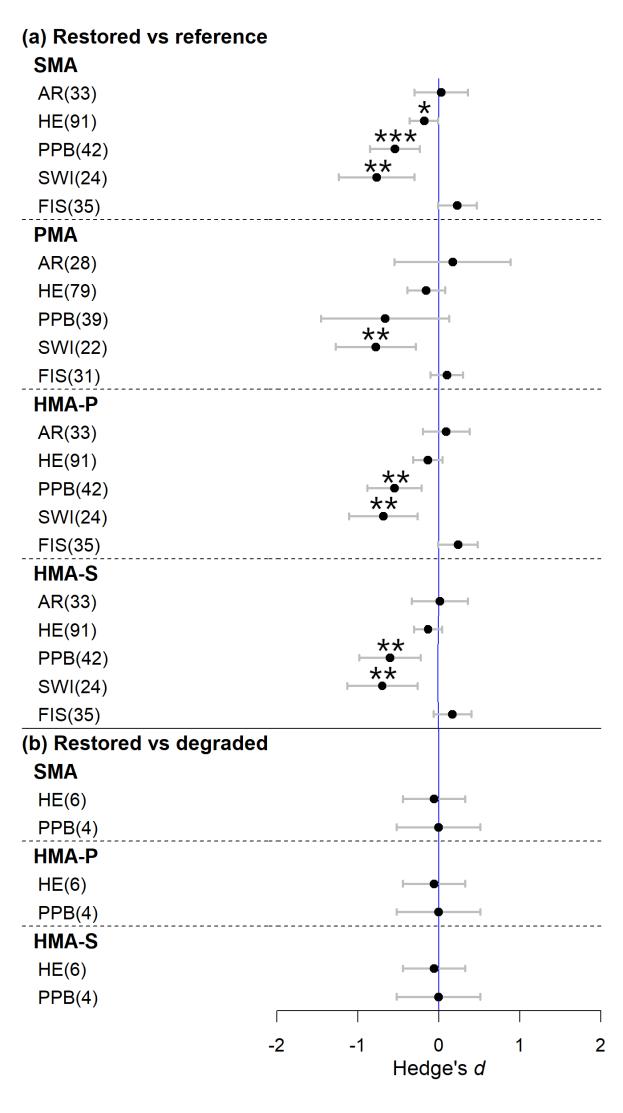Global Ecological Restoration Does Not Enhance Genetic Diversity in Restored Plant Populations
2023-04-21
Almost ubiquitous human disturbance has caused seriously negative genetic consequences for wild plants across the world, such as decrease of intraspecific genetic diversity, which probably jeopardizes individual survival and population persistence. Ecological restoration has been extensively practiced in different kinds of ecosystems. However, it is still unclear whether and to what extent ecological restoration has recovered genetic diversity of plant populations.
To fill this knowledge gap, Dr. WEI Xinzeng and colleagues from Wuhan Botanical Garden compiled a global dataset to compare the genetic diversity between restored and reference or degraded populations, and explored the underlying drivers, such as species characteristics and restoration strategies.
Genetic diversity was significantly lower in restored populations than in reference populations, and was comparable to that in degraded populations. The inbreeding coefficient was consistently comparable between restored populations and reference or degraded populations.
Ecological restoration effectively enhanced genetic diversity of herb species but not woody species, and grassland but not forest ecosystem. Passive restoration rather than active restoration, seeding rather than planting, and populations restored with mixtures from different donor populations rather than only one source population all significantly enhanced the genetic diversity of restored populations.
The genetic diversity of restored populations was comparable with the reference population when the restoration time was ≥50 years, but was significantly lower than the reference populations when the restoration time was <50 years.
The authors make the following recommendations for the enhancement of genetic diversity in restored populations. First, genetic diversity recovery should not be treated just as a co-benefit of ecological restoration, along with other aims, but as a key goal in future ecological restoration with plant species. Second, appropriate strategies should be adopted to improve and maintain genetic diversity in restored populations and to reduce genetic risk and resource consumption. Third, genomic approaches, such as population genomics, should be used to improve seed sourcing, assessment, and monitoring of restoration efforts.
This work was supported by the National Natural Science Foundation of China. Relevant research results have been published in Journal of Applied Ecology entitled “Impacts of ecological restoration on the genetic diversity of plant species: A global meta-analysis”. (First published: 12 April 2023)

Effect sizes (Hedge’s d; restored vs. reference (a); restored vs. degraded (b)) and 95%-CIs of genetic diversity and inbreeding coefficient (FIS) based on standard (SMA), phylogenetic (PMA), and hierarchical (HMA; P, paper; S, species) meta-analyses. (AR, allelic richness; HE, expected heterozygosity; PPB, percentage of polymorphic bands; SWI, Shannon-Wiener index; parentheses, number of data points; vertical blue line, Hedge’s d = zero).(Image by WBG)